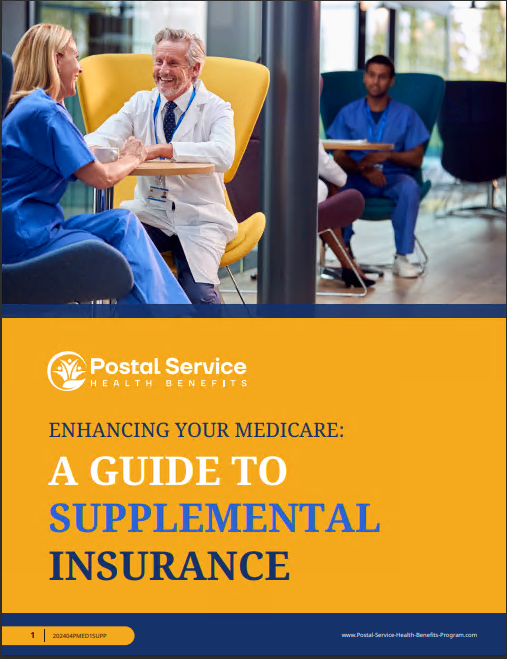Key Takeaways
-
Understanding your PSHB coverage options for 2025 can significantly improve your healthcare experience and potentially reduce your medical costs.
-
Being proactive about reviewing your coverage now helps you take advantage of beneficial changes, avoid surprises, and ensures your plan aligns with your healthcare needs.
Why Getting Familiar with Your PSHB Options Matters
As a USPS employee or retiree, transitioning from the FEHB to the Postal Service Health Benefits (PSHB) program in 2025 means you’ll need to make informed choices about your coverage. While many basics remain familiar, PSHB introduces distinct advantages that could greatly impact your care quality, convenience, and costs.
Let’s walk through four PSHB coverage options that might make all the difference in how you access and pay for your medical services.
1. Enhanced Coordination with Medicare Part B
If you’re a retiree or approaching retirement, coordinating PSHB with Medicare Part B can be a strategic move. Here’s why:
Reduced Out-of-Pocket Expenses
-
Many PSHB plans provide significant savings by waiving or greatly reducing deductibles, copayments, and coinsurance when you’re enrolled in both PSHB and Medicare Part B.
-
Medicare integration helps cover costs that would otherwise come directly from your pocket, potentially saving you thousands per year in medical expenses.
Simplified Healthcare Management
-
Enrolling in Medicare Part B along with PSHB creates a seamless healthcare experience.
-
You’ll benefit from simplified claims processing, fewer billing errors, and clearer statements explaining what services Medicare covers versus your PSHB plan.
Actionable Tip:
-
Double-check your eligibility timelines. Medicare enrollment typically begins three months before you turn 65, continues through your birthday month, and extends three months afterward. Coordinating this with your PSHB coverage ensures continuous care and maximum cost benefits.
2. Prescription Coverage with Part D Employer Group Waiver Plan (EGWP)
Under the PSHB, your prescription drug coverage sees a meaningful upgrade through the inclusion of the Medicare Part D Employer Group Waiver Plan (EGWP).
Prescription Cost Savings
-
The EGWP can help significantly lower your prescription drug costs by providing negotiated discounts and rebates directly passed to you.
-
A notable improvement for 2025 is the $2,000 annual cap on out-of-pocket prescription expenses under Medicare Part D, which protects you from unexpectedly high medication bills.
Convenience and Accessibility
-
The EGWP ensures your prescription coverage seamlessly integrates into your PSHB plan, streamlining your experience at pharmacies nationwide.
-
You can easily track your prescription expenses through consolidated monthly statements, making budgeting and financial planning easier.
Actionable Tip:
-
Review your Annual Notice of Change (ANOC) letter each October during Medicare Open Enrollment (October 15 – December 7) to understand exactly how prescription coverage under your PSHB EGWP may change each year.
3. Flexible Options for Family Coverage
Family coverage under the PSHB has seen important enhancements to ensure all family members benefit from comprehensive healthcare.
Expanded Coverage for Dependents
-
Your PSHB options continue to provide robust family coverage, allowing dependents up to age 26 to remain covered, regardless of their marital status or residence.
-
This flexibility ensures your family members maintain continuous, quality healthcare even if their personal situations change.
Cost Management with Varied Deductibles
-
PSHB plans offer different deductible options, allowing you to choose between lower deductibles with slightly higher premiums or higher deductibles with reduced monthly costs.
-
Selecting the right deductible structure can greatly impact your annual healthcare budget, so consider how frequently your family accesses medical care when making your decision.
Actionable Tip:
-
Use the annual Open Season period (November 11 to December 13, 2025) to compare your family’s expected healthcare needs against various PSHB deductible structures and copayment schedules.
4. Improved Telehealth and Virtual Care Services
One of the standout features of PSHB coverage in 2025 is expanded telehealth access, reflecting modern healthcare trends and the increasing demand for convenience and flexibility.
Easy Access to Specialists
-
Many PSHB plans now cover virtual visits with primary care doctors, specialists, and even mental health providers, often at reduced copayments compared to in-person visits.
-
Expanded telehealth helps you consult healthcare professionals without lengthy waits or travel, improving your overall health management and convenience.
Cost Savings on Routine Care
-
Regular virtual check-ups and consultations can minimize emergency visits and urgent care trips, significantly reducing out-of-pocket costs.
-
Telehealth visits often incur lower copayments or are sometimes fully covered by your plan, providing financial savings alongside convenience.
Actionable Tip:
-
Familiarize yourself with your PSHB telehealth benefits now. Understanding the specifics—such as available providers, copayment costs, and covered services—will enable you to confidently use virtual care when you need it most.
Making the Right Choices for Your Health
As you evaluate your PSHB options, here’s a quick recap to guide your decision-making process:
-
Understand Medicare Coordination: Leverage Medicare Part B integration to minimize your healthcare expenses.
-
Maximize Prescription Benefits: Utilize the Medicare Part D EGWP for prescription drugs, enjoying capped annual expenses and simplified prescription management.
-
Plan Family Coverage Strategically: Choose deductibles and coverage levels tailored to your family’s healthcare usage and budget.
-
Embrace Telehealth Solutions: Take advantage of robust virtual care offerings for efficient, affordable healthcare services.
Now’s the time to dive deeper into each of these areas to ensure your PSHB coverage aligns perfectly with your current lifestyle and future needs.
Don’t Navigate These Decisions Alone
Choosing healthcare coverage is a significant decision, but you don’t need to make these choices alone. Professional advice can help clarify any confusion and ensure you’re getting the most from your coverage. If you’re unsure about which options are best suited for your specific situation, it’s a good idea to get in touch with a licensed agent listed on this website. They can provide personalized guidance and ensure you’re fully informed about your PSHB options for 2025.





